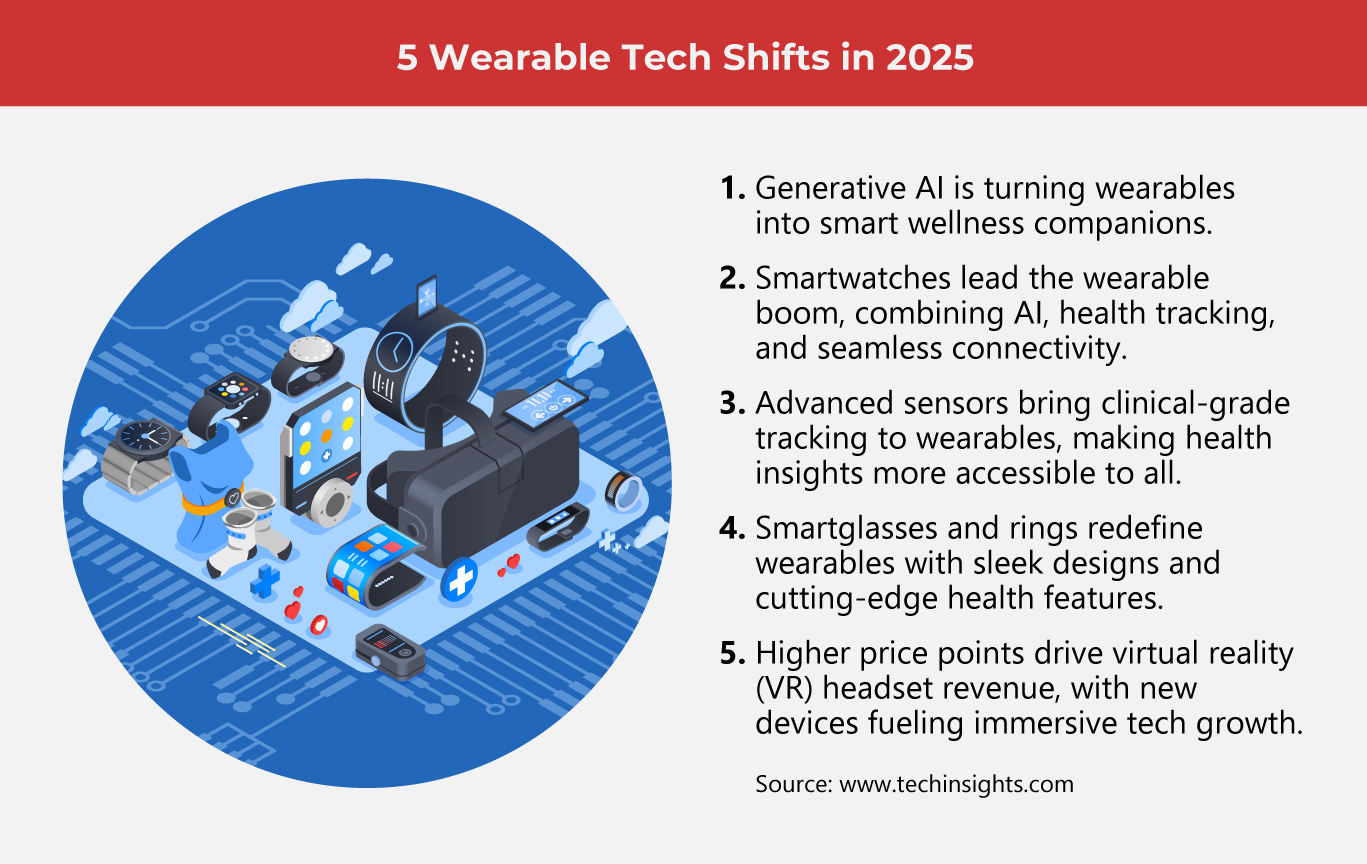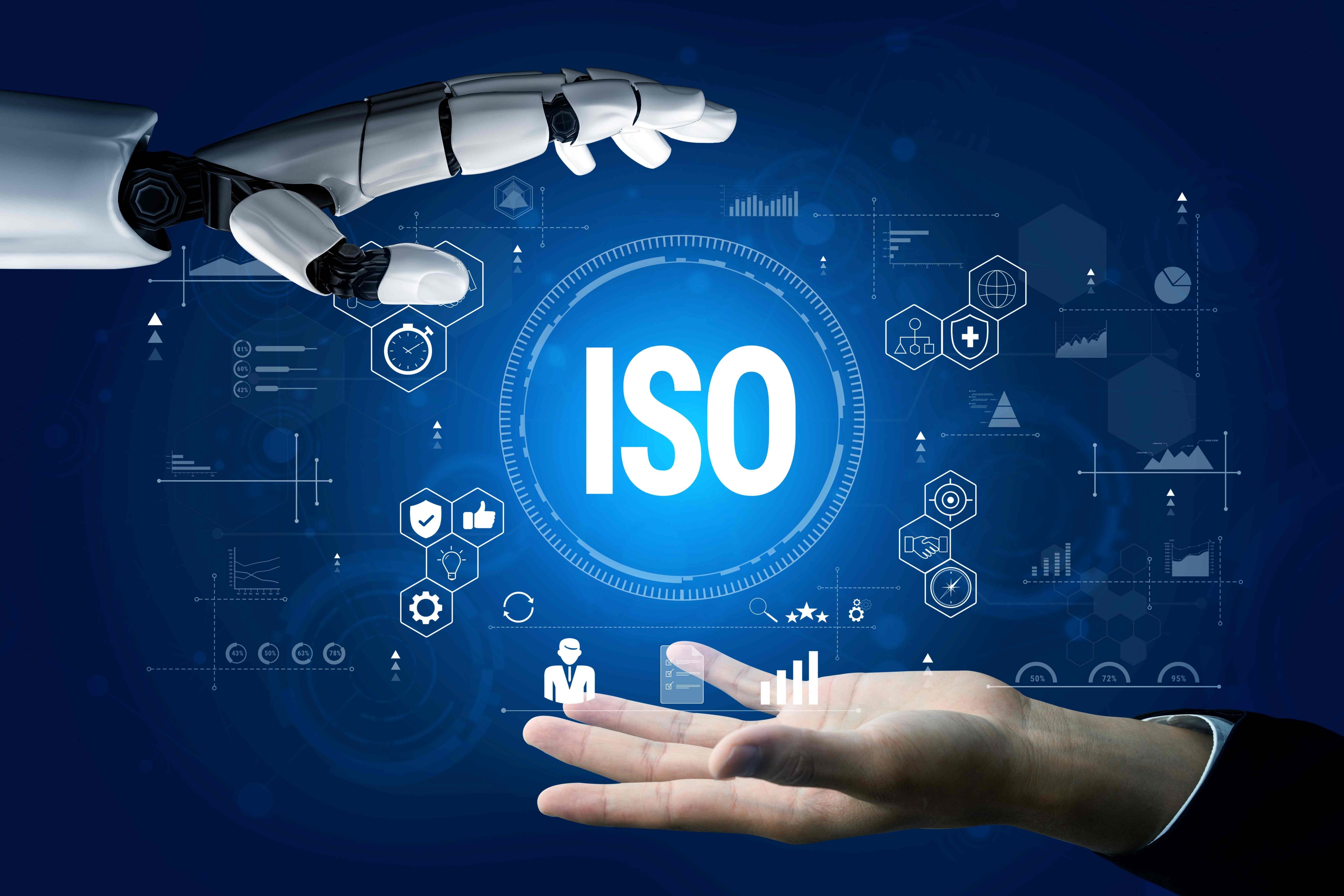The Next Big Thing in Wearables

Medical electronics are ushering in a new era of wearable health tech, shifting from basic fitness tracking to predictive tools that detect issues before symptoms emerge. Once confined to hospitals, technologies such as sleep apnea analysis and ultrasound are now available for use at home. Powered by generative AI, the latest devices offer tailored insights and on-the-go virtual assistants, marking a major leap in personalized preventive care.
Poised for a breakthrough in 2025, the global medical technology and electronics sector is rapidly evolving as AI-powered tech accessories gain traction. Driven by consumer demand for smarter health tools, the market is expanding fast, with healthcare-focused wearable AI projected to hit $169 billion by 2029.
As electronics become more compact and capable, future-ready medical devices are enabling a new class of wearables that deliver rich streams of real-time patient data. These next-gen tools are reshaping care by offering deeper insight into vital signs while encouraging individuals to take a more active role in managing their well-being.
(Also read: Top 12 Med Breakthroughs for Better Health This 2025)
The wearable revolution
Wearable medical devices are compact tools worn on the body that collect and transmit health data in real time. With AI and advanced system integration, they analyze patterns, adapt to individual baselines, and deliver personalized insights through smart sensors and seamless connectivity.
- Smarter health tracking
Body-worn devices provide doctors with real-time access to patients’ vital signs, extending beyond clinic walls. With easy-to-use devices enabling remote monitoring, clinicians can detect irregular heart activity early, track trends continuously, and make faster, more informed decisions.
- Early intervention
Early detection is becoming more precise with smart devices that can identify small physiological changes that may signal serious conditions. These give patients and doctors time to respond before issues escalate into emergencies or require hospital care.
- Expanded medical data access
Wearable devices track health data continuously, giving patients a clearer view of their well-being. When this information is shared electronically with doctors, it enhances communication, supports timely decisions, and helps personalize care and treatment.
- Chronic health monitoring
For those living with long-term conditions, wearable tech simplifies daily health tracking and supports consistent care. These devices monitor vitals like glucose or blood pressure, offering smart prompts that help inform clinical decisions.
- Cost savings
Product testing in healthcare is shifting as AI wearables prove their value. These devices catch health issues early, reduce unnecessary hospital visits, and cut costs. Continuous monitoring helps make healthcare delivery more efficient for patients and providers.
- Customized treatment
With constant streams of data from devices, doctors can fine-tune care. These insights support responsive, patient-specific decisions, allowing medical teams to adjust treatments with greater accuracy based on how the body responds.
- Care for mental health
Not all health struggles show on the surface. Wearables track subtle signals like disrupted sleep or shifting heart rates. Some even respond with real-time calming tools, offering discreet support for mental well-being.
(Also read: It’s Medtech’s Time to Shine)

8 medical wearables to know in 2025
With rapid advances in health tech, 2025 is set to see a wave of new product introductions.
- Smartwatch for epilepsy care
Empatica’s Embrace2, backed by FDA product validation, is a wrist-worn device for epilepsy care. It monitors for seizures and alerts caregivers, offering around-the-clock support for individuals living with epilepsy and their families.
- Wearable patch for BP monitoring
Spotting high blood pressure isn't always straightforward. BioBeat’s chest-worn patch offers a clearer picture by tracking blood pressure continuously. This uninterrupted data helps uncover risks often missed during in-office checks and routine screenings.
- Smart ring for full-body tracking
This sleek health ring tracks everything from sleep cycles to heart rate and body temperature. By analyzing subtle changes, it offers insights into recovery, activity readiness, and early signs of illness.
- Continuous glucose monitors (CGMs)
Several CGM models like Medtronic Guardian Connect and Senseonics Eversense E3 now offer continuous glucose tracking without finger‑pricks. These transmit data to smartphones and deliver alerts for high or low readings.
- Sweat-tracking devices
Sweat holds valuable health information, from stress indicators to signs of disease. Through innovative product design and development, wearable sensors now study sweat composition, offering non-invasive insights that support early detection of potential health issues.
- Patch for vital sign monitoring
VitalPatch by VitalConnect is a clinically approved wearable that tracks the ECG, heart rate, breathing, and temperature. It transmits data to a secure cloud system, allowing doctors to monitor patients remotely.
- Masks that monitor sleep
ResMed’s smart sleep masks are redefining how sleep apnea is tracked and managed. Worn overnight, they gather precise data on breathing patterns, usage habits, and disruptions. These insights help doctors fine-tune treatment plans.
- Wrist-worn tracker for sleep and stress
Worn like a bracelet, this fitness-focused strap collects continuous data on heart rate variability, sleep cycles, and physical strain. This helps medical professionals spot health trends early, supporting better management of long-term conditions.
Barriers to the rise of AI-driven wearables
Despite their rapid growth and potential, AI-driven wearables still face several challenges that impact their development, adoption, and effectiveness in real-world healthcare settings.
AI-powered wearables gather extensive health information, raising significant concerns about data privacy. A data leak is not just a technical issue but a serious breach of trust. Devices must include strong encryption, comply with privacy laws, and give users control over their information.
Precision also matters. A missed alert or a false reading can erode confidence and put users at risk. These tools need frequent updates and training with diverse data to stay reliable and fair for all types of users.
Adoption is still uneven. Many people cannot afford these devices or find them difficult to use. For AI wearables to reach their full potential, they must be more affordable, easier to use, and accessible in more communities.
As one of the Top 20 EMS companies in the world, IMI has over 40 years of experience in providing electronics manufacturing and technology solutions.
We are ready to support your business on a global scale.
Our proven technical expertise, worldwide reach, and vast experience in high-growth and emerging markets make us the ideal global manufacturing solutions partner.
Let's work together to build our future today.
Other Blog




